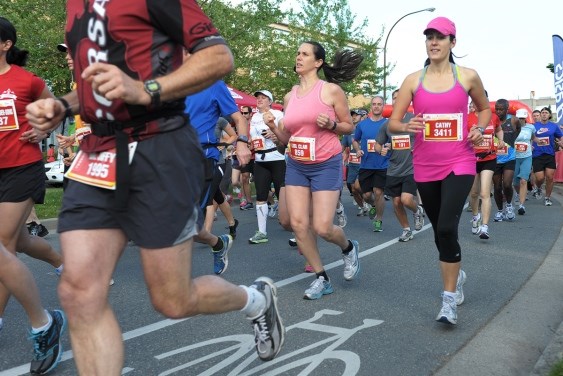It is easy to understand why politicians want to label their own constituencies as the very best at something. It conjures local pride and invariably a little competition among other jurisdictions.
In Vancouver’s case, those running city hall aspire for us to become the world’s “greenest” city by the year 2020. However, is there not something more substantive here than preening ourselves over the quantity of LEED certified buildings and community gardens?
When it comes to really defining who we are as a city, our reputation is being framed by something many more of us can relate to — our health.
Vancouver is increasingly known for its comparatively trim, physically fit, non-smoking population.
A study published by the Canadian Journal of Public Health estimates that there would be health care savings in the billions if other provinces had similarly active lifestyles as we do here in B.C.
The same weekend that the report was making headlines, an impressive 10,000 participants lined up to run in the SeaWheeze half-marathon — one of dozens of large and small-scale race events that fill our calendars here.
British Columbians have the lowest rates of obesity (20 per cent with a body mass index of 30 or higher) and we have the fewest number of smokers in Canada (just 14 per cent of us smoke according to Statscan).
While our healthy society is largely due to personal choices and a good dollop of mild weather, some of that success has come from strong political will here in B.C., according to UBC health economist Hans Krueger, the study’s author.
“When the [provincial] government said it wanted to host the healthiest Olympics in the world, it wasn’t just words,” opined Krueger. “[Former Premier] Gordon Campbell put money into the B.C. Healthy Living Alliance, that was an important piece.”
Being an active city could have profound economic benefits as well. A report released in July titled “Designed to Move: Active Cities” goes so far as to suggest a physically active population makes us more economically competitive by increasing productivity and improving school performance.
The Designed to Move report was created as a blueprint for building active cities, regardless of size or location. It should be required reading for local government officials, including those here in Vancouver.
The report says, “A city’s ability to compete depends on an active population. Integrating physical activity into the places we work, live, learn, travel and play is the only way to ensure we move enough to thrive.”
Some of the recommendations are simple to achieve, provided that the “political will” exists.
Suggestions include making better use of school facilities and grounds by creating shared-used agreements to allow public access to gymnasiums, playgrounds and play equipment during non-school hours.
Make improvements in street design that feature more landscaping to enhance the pedestrian experience. We could upgrade some of Vancouver’s narrower sidewalks, and put more effort into removing litter and maintaining overgrown garden beds.
While Vancouver abounds with runners, cyclists, paddlers and those taking a stroll on our cherished seawall pathways, we can do more. We could establish new jogging and walking routes, and combine them with safer traffic crossings right across the city.
And notwithstanding the headaches they cause with opponents, the city should build more bike lanes, too.
Designed to Move has some practical steps too for our elected officials to build active cities. It recommends embedding physical activity right into community plans, and aligning city departments toward the end goal of building an active city.
Most of Vancouver’s neighbourhoods, for example, still lack the ability to do basic shopping without a vehicle. This is something our zoning bylaws can address.
The easiest suggestion of all is to get our politicians to talk more — about active cities, of course. Elected leaders, as well as employers and business leaders, can wax about our active lifestyles in speeches and other communications.
The report lists off the long-term benefits of building active cities. These include lower health costs for our aging society, improved air quality, and reduced crime. Just imagine if we began to tackle Vancouver’s bike theft scourge head on.
Thanks in part to the social and business networks running and cycling clubs foster active cities are also more connected and happier places to live.
That is something any politician would be proud to boast about.



